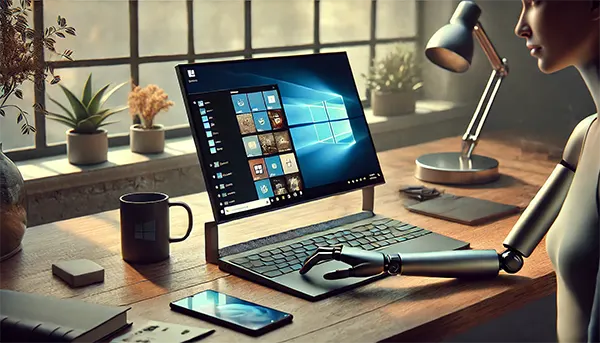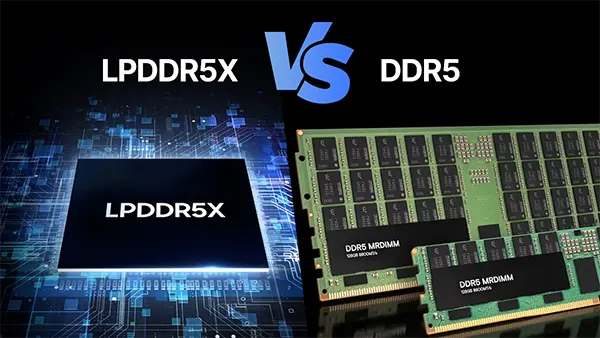
Reality of Windows on ARM in 2025: Should You Switch from x86?
As we step into 2025, Windows on ARM is no longer a niche experiment — it’s a serious alternative to traditional x86 computing. With increasing interest from both hardware vendors and developers, many are now questioning whether it’s time to move away from x86. This article explores the real state of Windows on ARM, app support, how it compares with Apple’s M-series, and what it all means for the future of PC architecture.
Application Compatibility and Ecosystem Maturity
In early 2025, native app support for Windows on ARM has grown substantially. Microsoft Office runs flawlessly, offering full feature parity with x86 versions. Adobe has also optimised key software like Photoshop and Lightroom for ARM, delivering smooth performance on devices such as the Surface Pro X and Lenovo ThinkPad X13s.
Meanwhile, gaming remains a mixed bag. Steam is officially supported, but many games still rely on x86-64 binaries and may perform poorly through emulation. However, Windows 11’s updated ARM64EC technology has significantly improved compatibility, making it easier for developers to gradually transition their apps to native code without breaking legacy functionality.
Even popular browsers like Chrome, Edge, and Firefox now have well-optimised ARM versions, ensuring seamless browsing experiences. Enterprise software vendors are also catching up, with Citrix, Zoom, and Slack among those offering reliable ARM-native clients.
Performance and Battery Life Improvements
One of the main reasons users are considering ARM-based Windows laptops is battery efficiency. Devices such as the Qualcomm Snapdragon X Elite-powered laptops boast over 20 hours of battery life under typical workloads, significantly outlasting many x86 counterparts.
Performance is no longer the trade-off it once was. Benchmarks for chips like the Snapdragon X Elite and Microsoft SQ3 show competitive results against Intel’s 12th and even 13th gen CPUs in productivity tasks. ARM chips also maintain lower thermals, allowing for fanless or near-silent designs.
This makes ARM laptops especially appealing for students, writers, and remote workers who value mobility and reliability over raw performance in gaming or specialised applications.
Windows ARM vs Apple Silicon: A Real Rivalry?
Since the debut of Apple’s M1 chip in 2020, the tech world has closely watched its rise. By 2025, Apple’s M3 Pro and M3 Max chips dominate high-performance workflows, particularly in video editing, 3D design, and software development. However, Windows on ARM is slowly closing the gap.
Microsoft has been working with Qualcomm, MediaTek, and Samsung to push ARM into mainstream Windows devices. Unlike Apple’s tightly integrated ecosystem, Windows ARM still deals with hardware and software fragmentation, which sometimes leads to inconsistent user experiences.
That said, in tasks like web browsing, document work, and video conferencing, Windows ARM devices hold their own. The Snapdragon X Elite-based machines in particular offer close performance to Apple’s M2 chips, though they still lag behind the M3 in multi-threaded creative workloads.
Software Availability and Developer Support
Apple has an advantage due to its unified developer ecosystem. With all Macs now running on ARM, developers are incentivised to create and optimise software specifically for Apple Silicon, ensuring polished, high-performing apps.
Windows, by contrast, must still support both x86 and ARM users. However, Microsoft’s efforts with Project Volterra and its ARM Developer Kit have gained traction. Visual Studio 2022 now supports native ARM64 development, and Microsoft’s App Assure programme is helping enterprise developers migrate software smoothly.
The shift is happening gradually — developers are increasingly offering dual-platform support. Tools like Flutter, Electron, and .NET MAUI also help simplify cross-platform development, encouraging broader ARM adoption across Windows devices.

The Future of PC Architecture: What’s Next?
ARM architecture is expected to play a central role in the future of personal computing. As more vendors invest in ARM chipsets and as Windows optimises its OS further, ARM-based devices will no longer be considered secondary to x86 systems.
Microsoft has made its intentions clear with Windows 12 rumours suggesting tighter integration and better performance on ARM. We may soon see flagship Windows laptops running exclusively on ARM, especially in the ultraportable and business sectors.
Industry analysts predict a more balanced market by 2026, with ARM and x86 coexisting in different form factors — ARM leading the mobile-first devices, and x86 remaining dominant in desktops and high-end workstations until ARM’s performance scales even higher.
Challenges and Industry Shifts
Despite progress, challenges remain. Software compatibility for legacy enterprise apps, driver availability, and gaming support still favour x86. Microsoft continues refining its emulation layer, but native performance remains key for mission-critical applications.
Meanwhile, OEMs like HP, Dell, and ASUS are cautiously expanding their ARM portfolios, with flagship devices expected in Q3 and Q4 of 2025. The success of these launches will be critical in shaping consumer trust and market momentum.
Ultimately, the transition depends on user needs. For those prioritising battery life, portability, and long-term OS support, ARM-based Windows machines are an increasingly smart choice. But for users heavily reliant on specific legacy tools or high-end creative suites, x86 still holds its ground — at least for now.




